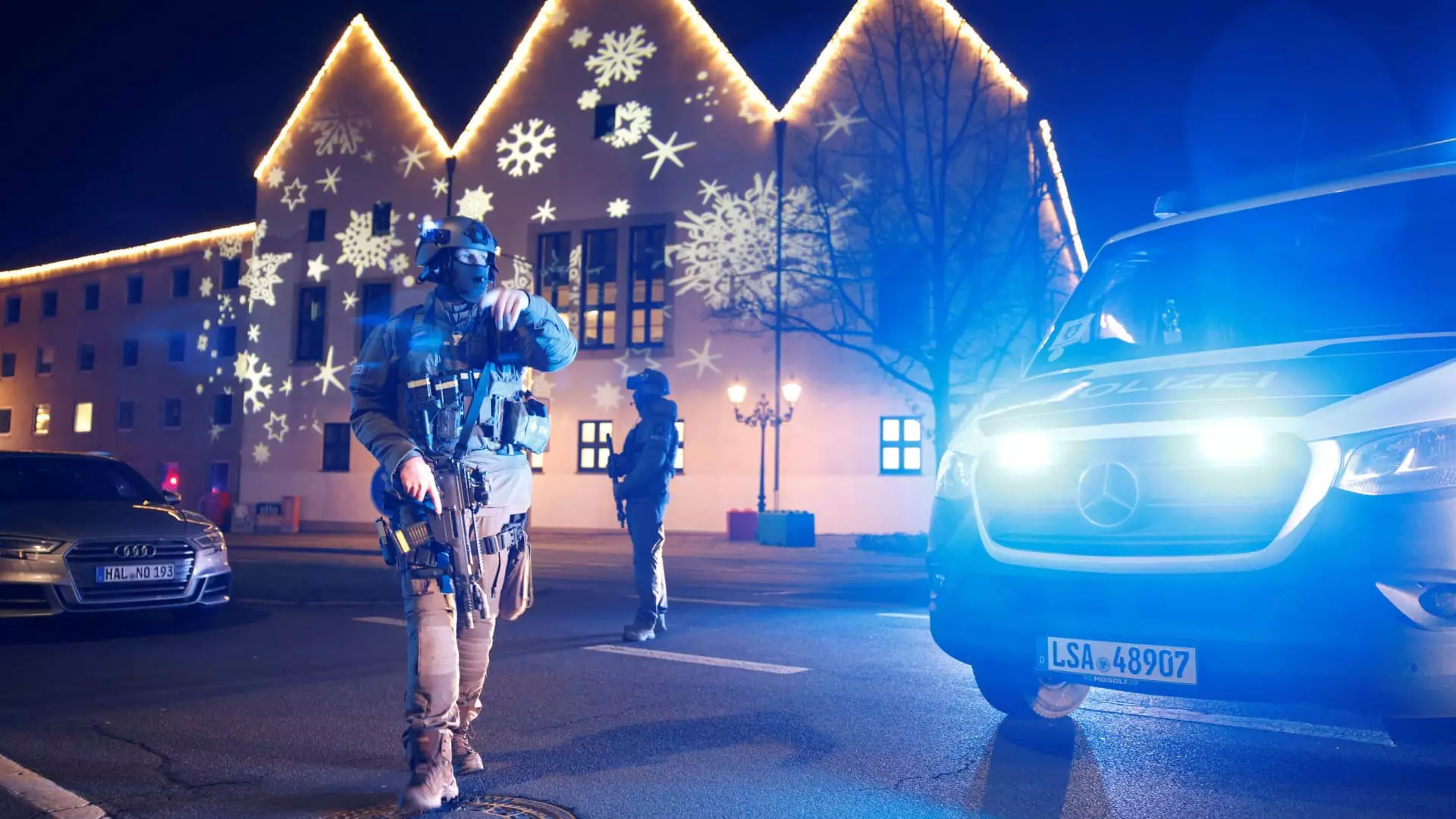On a fateful day in Magdeburg, Germany, a heinous act left a community reeling. Taleb al-Abdulmohsen, a 50-year-old Saudi Arabian doctor, stands accused of deliberately driving his vehicle into a crowded Christmas market, resulting in the tragic deaths of four women and a nine-year-old boy. This shocking incident underscores a series of pressing questions regarding motivations, security protocols, and the broader implications for society in Germany and beyond.
The scene was chaotic—over 200 people were injured, with many sustaining serious injuries as the infamous black BMW barreled into them. Authorities confirmed the brutality of the attack and indicated that al-Abdulmohsen had dangerously circumvented established security measures designed to deter such incidents. His actions, particularly his decision to enter through a gap meant for emergency vehicles, raise critical concerns about current security practices in public spaces.
Al-Abdulmohsen’s backstory is as complex as it is compelling. Originally from Saudi Arabia, he entered Germany in 2006 and sought asylum a decade later, citing threats to his safety. His background as a psychiatrist paints a picture of a man who has only recently become entangled in extremist sentiments. After years of building a life in Germany, it is troubling to consider what could have driven him to such a violent outburst.
Reports have surfaced indicating that the suspect had expressed anger towards both German authorities and the treatment of Saudi Arabian refugees. His association with far-right groups, including the Alternative for Germany (AfD) party, highlights a growing trend where individuals turn to extremist ideologies during personal or societal crises. The link between personal grievances and broader ideological narratives is critical for understanding both the motivations and consequences of this tragedy.
The attack has left the public in Magdeburg and across Germany grappling with fear and uncertainty. According to experts, this incident represents a worst-case scenario for security officials, who find it increasingly difficult to predict or prevent such spontaneous acts of violence. In light of this event, security measures around vital public gatherings are being scrutinized, and people are left questioning their safety during communal events.
The emotional toll of this attack cannot be overstated. Community members are mourning the loss of innocent lives, and questions abound regarding how to prevent similar tragedies in the future. Authorities are diligently searching for additional evidence to understand whether this act was a random act of violence or if it formed part of a larger extremist agenda.
As investigations proceed, significant attention is being focused on al-Abdulmohsen’s online presence, which allegedly included inflammatory content and erratic behavior. This aspect raises vital issues surrounding social media’s role in radicalization and the challenges of monitoring individuals whose actions can spiral into violence seemingly out of nowhere.
Moreover, the narrative surrounding this incident speaks volumes about the current discourse on immigration and integration within Germany. While al-Abdulmohsen’s background may categorize him as a refugee, his affiliations depict how some may misinterpret or weaponize their experiences, creating a bridge between victimhood and violence.
The Magdeburg Christmas market tragedy serves as a painful reminder of the fragility of public safety and the necessity of understanding the factors that drive individuals towards such extreme actions. As investigators delve deeper, the public and authorities alike must grapple with the intersection of immigration, personal crises, and the ideologies that fuel violence. Moving forward, fostering compassion, community cohesion, and effective security measures will be crucial in healing from this tragedy and preventing future occurrences.

